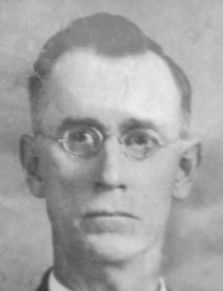
Importance of the face
- “The face is typically the first thing that people notice when encountering another individual.” (Rule, 211)
- “Faces can signal behavioral intentions and internal mental and emotional states.” (Rule, 211)
- “The human face transmits a wealth of signals that readily provide crucial information for social interactions.” (Caldera, 249)
- “No other stimulus conveys such rich information in so finite a space.” (Adams, Albohn, & Kveraga, 243)
- “Faces contain many informative cues that people use to infer each other’s characteristics, making them arguably the most dominant and fruitful means through which people perceive each other and categorize individuals into groups.” (231)
- “Evidence moreover suggests that perceivers categorize others into social groups unintentionally upon seeing their faces.” (231)
- Big three social categories: age, race, sex
- But we also categorize or make inferences on more subtle characteristics such as sexual orientation.
- “People use the same facial features to stereotype and form prejudiced beliefs about others as they do to categorize them.” (233)
- These categorizations and stereotypes can affect hiring decisions and how people interact.
- “Impressions from faces are fast and automatic.” (Zebrowitz, 237)
- First impressions “can lead to inaccurate impressions of people’s psychological traits and has significant social consequences.” (237)
- Four main dimensions of first impressions from facial cues: warmth/trustworthiness & power/dominance
- Impact of perceived central traits: perceive warmness, perceived more positively in spite of negative information; perceive coldness, perceived more negatively.
- People prefer faces “they have seen before” or “similar to previously seen ones.” (238)
- “Eyes represent the most dynamic and richly informative social stimulus we encounter in our daily lives.” (244)
- “The eyes produce some of the most genuine, dynamic, and socially relevant signals we use to perceive those around us.” (244)
- “We are more sensitive to eye movements than to head movements or postural behaviors.” (244)
- There are some cultural differences in facial processing, contrary to what social scientists previously thought.
- Westerners (Europe and American cultures): fixate on eye and mouth regions
- Easterners (China, Korea, Japan): more global face processing
- For determining emotions: Westerners, mouth; Easterners: eyes
- “Facial appearance should play a small or a very limited role in observers’ selection of leaders; however, research convincingly shows otherwise.” (270)
- The more distant the potential leader and the less information we have, the more we rely on facial characteristics for judgments about “character and competence.” (270)
- “Appearance plays a significant role in being selected as a leader . . . and being paid a higher salary.” (272)
My take-aways:
1. Perceptions based on facial characteristics occur quickly. First impressions may be wrong. Knowing this, we can try to guard against prematurely reaching conclusions. This possible bias underscores the need for objective measures in hiring and promotions.
2. Research suggests there are some cultural differences in how we process facial characteristics. This is useful information not only for interactions in other countries but also at work with people of different ethnicities.
3. This issue suggests that we infer integrity, confidence, and such from facial characteristics, rightly or wrongly. As followers we look to our leaders for these qualities. My guess is perceived facial characteristics will continue to play a role in leader selection, given human nature. However, organizations might be wise to make corrective actions should the selected leader not be able to provide the leadership needed.
Adams, R. B., Jr., Albohn, D. N. & Kveraga, K. (2017) Social vision: applying a social-functional approach to face and expression perception. Current Directions in Psychological Science, 26(3), 243-248.
Antonakis, J., & Eubanks, D. L. (2017) Looking leadership in the face. Current Directions in Psychological Science, 26(3), 270-275.
Caldara, R. (2017) Culture reveals a flexible system for face processing. Current Directions in Psychological Science, 26(3), 249-255.
Rule, N. O. (2017) Introduction to the special issue on face perception. Current Directions in Psychological Science, 26(3), 211.
Rule, N. O., & Sutherland, S. L. (2017) Social categorization from faces: evidence from obvious and ambiguous groups. Current Directions in Psychological Science, 26(3), 231-236.
Zebrowitz, L. A. (2017) First impressions from faces. Current Directions in Psychological Science, 26(3), 237-242.
Image, “Luther Ballard,” from my collection of family photos.
© John Ballard, PhD, 2017. All rights reserved.
Author, Decoding the Workplace, BEST CAREER BOOK Next Generation Indie Book Awards 2016.
Please visit www.decodingtheworkplace.com.

 RSS Feed
RSS Feed